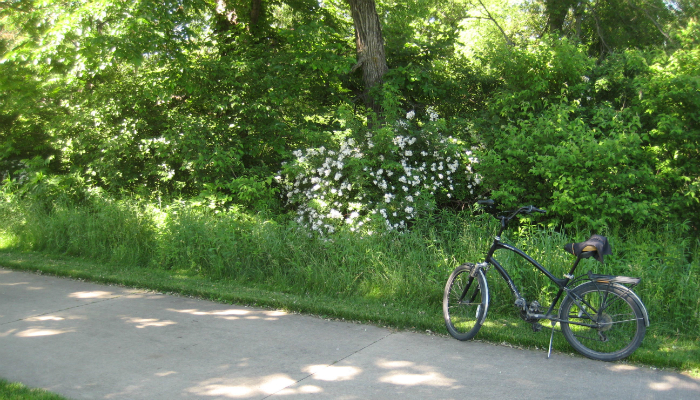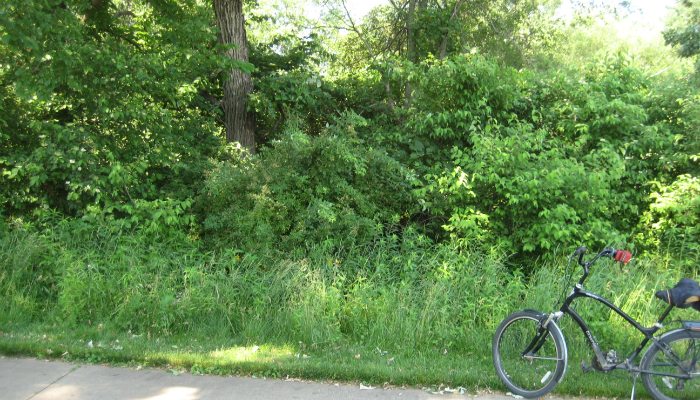The “Achilles Heel” of Multiflora Rose

Now you see it… Multiflora rose in bloom, conspicuous even in deep shade (June 2).
Multiflora rose has been one of our longest recognized invasive species. Originally imported from Japan, it was promoted and distributed by government agencies as a wonderful conservation plant. I can remember magazine photos showing attractive hedgerows in flower, close-ups of birds nesting in the canes, Boy Scout troops planting it, and Ag promoters discussing whether living fences might make a comeback. For its first several decades here, there was no mention of problems, and I don’t remember these early plantings being invasive.
But ever so gradually it began appearing spontaneously, first in untilled fields near deliberate plantings, and then much further away. In hindsight, I now wonder whether it might have hybridized with our native roses (of which there are many), or with other imported roses, and became better adapted to local climates and soils.
Then about a decade ago here in Iowa, a blight appeared. For a few years it seemed that perhaps the disease would help control this now difficult-to-manage weed. Unfortunately, the blight has abated, which from a Darwinian perspective is logical because it’s in a parasite’s best interest to not kill its host.
But armed with herbicides, we have the ability to combat multiflora rose during a brief moment of special vulnerability. In late May, it puts out a flush of new growth comprised of tender vine-like shoots followed by a week of prolific and conspicuous flowering. The plant has drawn heavily on its root reserves to do this and the young shoots are not yet hardened, so it is at its most vulnerable to water-soluble herbicides like glyphosate (Roundup), which stops photosynthesis and prevents renewal of root reserves. These flowering canes show you exactly where it is lurking, even where tangled in other vegetation, so you can accurately apply the spray. If you are using an oil-based basal bark spray, the flowering canes also help focus your aim at the base of the plant.
Thus, near Memorial Day, when garden peonies are blooming, multiflora rose becomes visible at a great distance. If you have to deal with this invasive on an acreage, in a park, or on a conservation easement, mark your calendar well ahead so you can check your equipment and catch good weather for your search-and-destroy mission.

Now you don’t. Same location with multiflora rose hardly noticeable (June 12).


